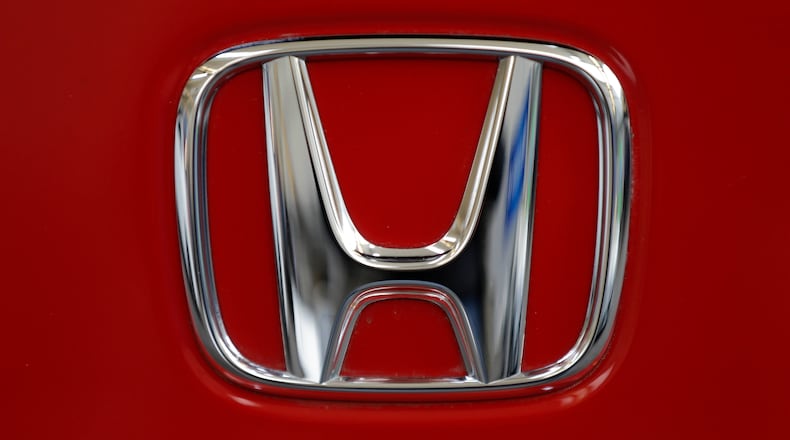I don’t want to get to college and have a clunker that falls apart. I like the car well enough, although my first choice would be a Jeep. Should I sell it now and try to get something with fewer miles, or should I hang on to it? Thank you. — Genevieve
RAY: Grip it tightly, Genevieve.
I side with your Dad on this one. Your grandpa came of age at a time when it was a surprise for cars to go more than 100,000 miles. A big hint was that odometers only went to 99,999.
Fifty years ago, you got bragging rights at the neighborhood OTB if you nursed your car over the 100K mark. But now it’s expected. If you get less than 100,000 miles out of a new car these days, you’d probably go on Twitter and badmouth the manufacturer.
Hondas, in particular, have a reputation for lasting a long time, provided they’re taken care of. Or even sometimes when they’re not. We’ve got several customers with Elements that have 250,000 miles or more on them. And they’re still running perfectly.
That’s no guarantee that yours will always run perfectly. Stuff eventually goes wrong with every old car. But the Element has proven very reliable.
Plus, it’s actually a perfect college car. The rear seats fold up out of the way to create a ton of cargo room to schlep your stuff from home to school every year. And they fold back down to drive your friends around. It’s all-wheel drive, which will help if you run into snowy or icy weather. It gets decent mileage, so it won’t cut into your pizza (not beer!) money. And it’s got a washable cargo area, in case you get involved in any crazy sorority pranks involving whipped cream, rotting fish and livestock.
Perhaps most important, you know its history. If you sell it and buy something else, you’ll have no idea how that other used car was driven, or how it was cared for. In the case of the Element, your dad took care of it. Which comes with an added bonus: He might even feel a little bit guilty when something goes wrong and help you out. Whereas if you trade it in for a Jeep, he’ll automotively disown you and wish you “good luck” when it breaks down.
My only suggestion is to ask your dad to have it checked out thoroughly before you leave for school. Take it to a mechanic and ask him to look it over as if you were buying it as a used car. Ask him to tell you everything he can find that’s wrong with it and everything that needs to be serviced and fixed. And have him change the rear differential oil and adjust the valves, if that hasn’t been done recently. That’ll give you one last chance to run the bill up on Dad before you take possession, Genevieve.
Low-tech and new tech options for nudging stopped drivers
Dear Car Talk:
I have a suggestion for Connie, the lady who wanted to install a second, gentler horn to nudge people who aren’t paying attention at traffic lights.
I suffer from the same problem: people texting or asleep at the wheel on the green light. My problem is even worse, as I need to go through a light-rail crossing to get home. Sometimes the green light will last for only two cars if you are awake and move fast. If not, the second car has to wait sometimes up to 5 minutes or more for another chance.
So ... I blink my high beams once or twice and this usually does the trick. Maybe Connie wants to try it before installing a second horn? If my trick stops working, I will install the horn.
I love your column. Thanks very much. — Marcela
RAY: Flashing your high beams can work, Marcela, but you don’t get the satisfaction of seeing the guy in front of you bolt up and hit his head on the roof of the car, drop his lit cigar between his legs and then floor it. But it’s certainly worth a try. Sometimes the high beams will be reflected in person’s rearview mirror, and that may be enough to get someone’s attention.
If not, you can always try a quick tap on the horn. But that doesn’t always work. Some cars seem to have only two horn positions: off and tugboat.
Interestingly, we test drive new cars, and we’ve seen several technologies starting to be used to address this annoyance. Subarus, for instance, use the forward collision warning system to detect when a car in front of you has pulled away. And it gently beeps at you to get moving.
BMW also uses its forward collision system to detect when the car in front of you pulls away and restarts the engine (which automatically turns off when you stop at a light). That’s also a nice way of getting the driver’s attention.
That’s a great, secondary use of that collision-avoidance technology. But it doesn’t work if you’re first in line at the red light and there’s nobody in front of you for the car to “detect.”
If you’re first at the light, then you have to wait for Marcela to flash her high beams at you, or for someone less polite to jolt you out of your beauty rest with full-on foghorn.
Got a question about cars? Write to Ray in care of King Features, 628 Virginia Drive, Orlando, FL 32803, or email by visiting the Car Talk website at www.cartalk.com.
About the Author

